

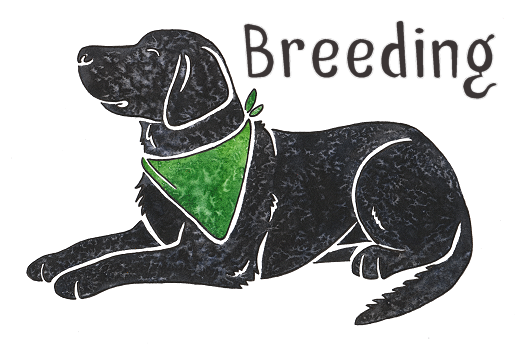
Breeding
The main purpose of this website is simply to teach you about how having different genes affects how a dog looks (phenotype), so I won't go into too much detail about breeding. If you have specific queries about breeding then it's best to become involved with a community of other breeders who can offer guidance. However, it's still important to know the basics of inheritance!

Getting Started
If you've been reading these pages in order, you will already know that every dog has a set of loci (points on its DNA) with two alleles on each one. For example, on the B locus they might have the alleles B and b, b and b, or B and B. These are picked from a list of possible alleles for each locus, which for the B locus is just simply B and b, but for other locii there may be a longer list (the A series, for example, has four known possible alleles - Ay, aw, at and a).
When mammals such as dogs breed, each parent passes on just one allele from each of its loci. This allele
is picked at random, so each of the two alleles has an equal chance (50%) of being passed on. However, it isn't just a case of the same
allele being passed on to all the puppies.
When a sperm cell fertilises an egg, an embryo starts to develop. The sperm cell is just one of thousands that have been produced by the male dog. Each sperm cell is an individual. It carries half the information needed to create a new life, and that information consists of one set of
alleles. This means it has one allele from each of the male dog's loci, and which of the two alleles that is is entirely random. There are lots of different genes and alleles, so the exact combination carried
by the sperm cell may well be pretty unique.
Egg cells also carry one set of alleles from the parent (one from each pair). However, fewer of them are produced, as it
wouldn't be good to have more than a certain amount fertilised at the same time (more than the mother can reasonably sustain).
Just a few out of the thousands of sperm produced will actually reach the eggs in the female dog's womb. The rest will die. The ones that do reach an egg
will join with it and insert their nucleus, which is the part of the cell that carries the genetic information (in this case, the incomplete strand
of DNA), into the egg. The nucleii of the egg and the sperm then join together to create a new nucleus which carries all the necessary genetic information
to develop into an embryo.

So we can see that genetics involves a lot of random chances. Because of this, we can't say that the puppies out of a particular breeding will definitely be this colour or that pattern. All we can do is predict the probability that the puppy will be a certain colour. It's important to remember this when reading the rest of this page. When predicting litters we usually give at least four possible outcomes for the puppies. This does not mean that you will get four puppies and one will be each of those colours. All it means is that each puppy has a 25% chance of being each colour. Occasionally you may even end up with all of the puppies in the litter inheriting the same colour genes; it just depends on which sperm reach the eggs. It's like throwing dice - sometimes you may be unlucky (or lucky, if you're playing a board game!) and get six sixes in a row. That seems really unlikely, but actually, each time you throw the die, the chance of getting a six is the same. Each throw is independent of all the others (the chance of getting a six the second time is not dependent on whether you got a six the first time), and genetics is very similar. Just because only one in six of the puppies are supposed to pure white according to our calculations, it doesn't mean that if the first pup born is white, the second is any less likely to be white too!

Labrador Case Study
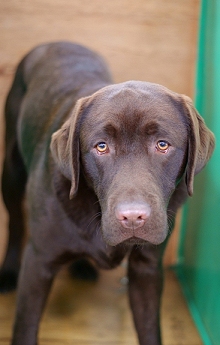
Now that we have a basic idea of how breeding works, let's look at a specific case study.
Let's say we have lots of Labradors, and we're going to breed them. Not in some bizarre, frenzied dog orgy, of course, but a pair at a time.

First, we decide we want some black puppies, so we pick two lovely, shiny black dogs. Let's call them Blackie and Sooty, because we're uninventive.
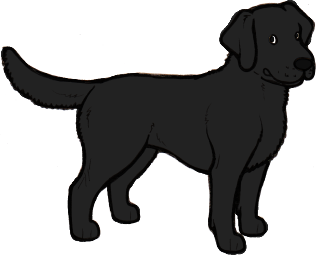

We breed Blackie and Sooty, and we get this litter:
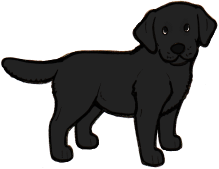



Well that all seems to be in order. We bred a black dog with a black dog and we got black puppies. Seems to make sense, doesn't it?

Enthused by the success of our first litter, and anxious to breed some more handsome black puppies, we choose two more black dogs: Jet and . . . Ed.


We breed Jet and Ed and get this litter:



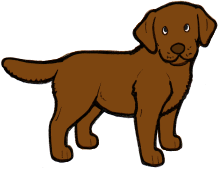
Looks good . . . but oh! Hang on a sec! One of those puppies is brown. How on earth did that happen?
Our surprise at getting this chocolate-coloured puppy leads us to look up dog colour genetics on the internet. It turns out that whether a dog is black or liver (chocolate/brown) depends on the alleles it has on a particular locus - the B locus. There are two possible alleles - B is black, and it's dominant over b, which is liver. Here's a list of the possible genotypes and what dogs with those genotypes would look like:
BB - two copies of black, so puppy will be black.
Bb or bB - one copy of black, one of liver. Black is dominant, so puppy will be black.
bb - two copies of liver. Puppy doesn't carry any black, so it must be liver.
** Not familiar with the term "dominant"? See Basic Terms for more information **

Punnet Squares
The mystery of the chocolate puppy can be solved by working out the genotypes of the parents. We can see from the list above that if a dog is black, it must be BB or Bb. If we calculate some breeding results from all the possible crossings of BB/Bb dogs, we can work out which breeding/s will produce chocolate puppies, and so from that we can have a fairly good guess at the genotypes of the parents.
The quickest and easiest way to calculate breeding results is to use a Punnet square. Firstly we'll see what happens when we breed a Bb dog with a BB dog.
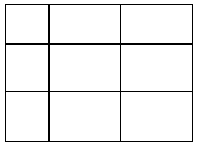
This is a blank Punnet square, ready for us to fill in. As you can see, there are two rows and two columns. The number of cells in the table
(not including the ones we'll put the column and row titles in) is four, so we'll get four puppy options each time we fill it in.
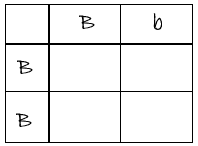
First we put the genotype of each parent in the boxes at the top and the side (the title cells). We put just one gene letter in each
cell, and it doesn't matter which parent goes across the top and which down the side (it makes no difference to the results).
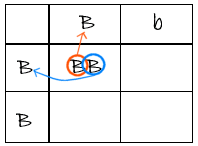
Now we need to fill it in. Each of the four cells represents one possible puppy genotype. To work them out, we trace up from the cell to the column title
and across to the row title. It doesn't matter which order we do this in (whether we look at the row or the column first), but I usually do column then row.
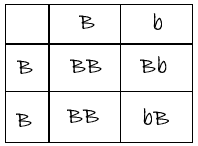
Here's the finished Punnet square. If we refer back to the list above, we can see that all the puppies in this litter would be black. There are no
bb puppies, and they're the only dogs that can be liver. So we haven't found Jet and Ed's genotypes yet. We need to keep looking!

Crossing a BB dog with another BB dog will obviously only produce BB puppies, so Ed and Jet cannot both be BB. From the example above we now
also know that it can't be right that one of them is BB and the other Bb. So the only other option we can try out is Bb x Bb:
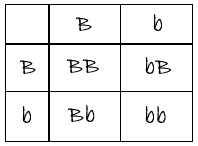
So that's three black puppies (BB, Bb and bB), and . . . one liver! It looks like we've found what we were looking for. Because the liver gene (b) is recessive,
it can be hidden, which means a dog can carry one copy of it without expressing (displaying) it. That means that two dogs carrying liver can be black themselves,
but produce liver puppies. It can be a bit of a problem when it comes to breeding, because recessive traits, such as liver and dilution, can remain hidden
in lines for many generations, then suddenly appear when a dog carrying the trait happens to be bred to another with it (if the gene
is very rare in the breed then it can be a long time until this happens, if it ever does). This is why breedings sometimes throw complete surprises,
like silver (blue) Labrador puppies in a breed which, to all intents and purposes, contains no silver at all. That one lone recessive silver gene (d, on the D locus) has been passed
down from generation to generation, completely unknown to the breeders, until finally it's met another one. It might have come from a cross breeding
with another breed many years ago, which doesn't show up on the pedigrees and no longer has any effect on the look of the dog. Such
rare recessive traits can be impossible to eradicate from a breed, simply because you can't tell which dogs carry them. In recent years, however, genetic testing has
helped to identify the carriers.

Anyway, so now we know that Jet and Ed both have the genotype Bb. However, if we wanted to get liver puppies in the future by just
breeding black dogs, how would we know which black dogs are Bb and which are BB, without doing any genetic testing? Luckily for us liver is quite common
in Labs, so it's not like trying to find out which Labs carry silver, where you could do hundreds of test breedings and still not get silver pups because
the chances of finding another dog with the gene are so slim. In the absence of genetic testing, the way to tell if a black dog is Bb or BB is to breed it to a liver.
We can be certain that the liver parent will be bb, because it can't be anything else. If the black parent is BB, we'll end up with all black pups,
because each pup can only possibly inherit B from the black parent. All of the puppies will have the genotype Bb. But if the black parent is Bb, half of the puppies
will be liver. How do we know this? By doing a quick Punnet square:
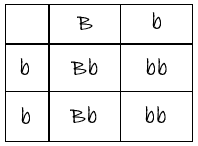
The resulting puppies will be:




So if any of the puppies in the litter are liver, the black parent must be a carrier of of the liver gene, so it must have the genotype Bb.

Lastly, it's important to note that due to the nature of recessive genes, the only breeding which will produce all liver puppies is bb x bb, so two liver parents.

Shortcomings of the Labrador Example

The example above is one used by countless websites and articles on dog genetics, and is sometimes even taught in schools. It is considered the standard example of how animal genetics work. However, now is the time to reveal that it's complete rubbish.
Well, okay, it's not complete rubbish. It's more or less correct as far as it goes, but it's also incomplete and misleading. It's now time to reveal how colour genetics in Labradors really work.
You'll probably already have noticed that there's one glaring omission from the example - yellow Labradors. These are usually left out because they complicate things immensely by adding another locus to look at (the E locus).
These are the colours that Labradors actually come in:

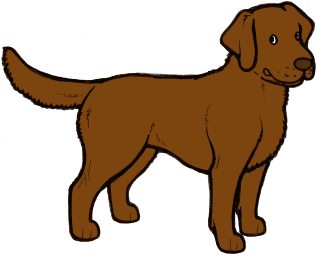
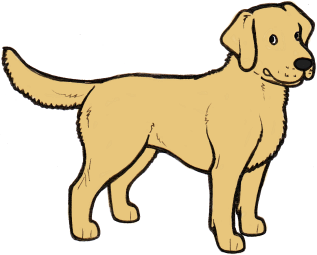
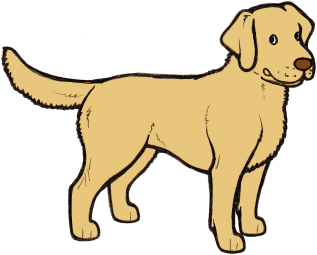
That's black, liver, yellow, and yellow with a brown nose (liver pigmented yellow).
There are three loci that are particularly important in Labradors. They are B, E and K.
At this point you may find it useful to read the pages on the E locus and K locus. I've provided a summary below, but it might not make much sense unless you're already familiar with how these genes work.
The B locus, as we already know, controls the liver colour. However, this doesn't mean that any dog that is bb will automatically be liver. All it means is that their nose will be liver, and IF they have any black in their coat, it will be liver. For the solid liver colour we see in Labradors, we need to take into account the K locus too. The K locus determines whether a dog is solid-coloured (eumelanin only) or has red/tan (phaeomelanin) in its coat as well. There are three genes in the K series, and if a dog has one or two K genes (K is the top dominant in the series, so it overrides everything else), it will be solid-coloured. In most cases, this means solid black, because black is the default colour of eumelanin, but a dog with the liver gene will have that solid black turned into liver, so will be solid liver.
As it happens, all Labradors are KK on the K locus. We know this because otherwise, if Labs carried the recessive k gene (which allows tan patterns to be expressed),
then every once in a while you'd get a sable or a black and tan puppy (both of which would be kk, and you'd get a kk dog from crossing
two dogs that carried k, so Kk x Kk), and this never happens, in show lines at least.
So now we know that a black Lab must be KKBb (heterozygous black, liver carrier) or KKBB (homozygous black). Because all Labs are KK, we can actually ignore the K locus when
we're calculating breeding results. This is why the original example above is partly right in just looking at the B locus, but in failing to mention
the K locus at all, it is misleading. It gives the impression that Bb/BB is automatically solid black and bb is automatically solid liver, which is only right in Labradors because of the K locus, and doesn't
work in most other breeds, which aren't always KK. A better way to think of it is that a bb dog is always liver pigmented (i.e. has a liver nose), and
and a Bb/BB dog is not liver. Most non-liver dogs will have black pigment.

Now let's complicate things even more by adding the E locus to our calculations. There are quite a few alleles on the E locus, but we'll just focus on the two that are present in Labradors - E (normal expression of whatever other genes the dog has; in other words, E doesn't have any effect) and e (stops the dog from being able to produce eumelanin in the coat, so any black or liver hairs will become red or tan). Yellow Labradors are ee on the E locus. They are, in effect, solid black or liver dogs that can't produce black or liver hairs and so produce yellow hairs instead. This allele is called recessive red. Two copies are needed for a dog to express it. All non-yellow Labradors are Ee (yellow carrier, can have yellow pups) or EE (not yellow carrier, cannot produce yellow pups).
Yellow Labs can have black or liver nose pigment, depending on whether they are genetically blacks or livers. Recessive red stops eumelanin from being produced in the coat, but it doesn't affect the nose, so this is always a good indication of a yellow dog's B locus genotype. The possible genotypes for Labradors, taking into account the B and E loci and remembering that any dog which is bb will have liver pigment and any dog which is ee will be yellow, are:
BBEE - black
BBEe - black (yellow carrier)
BBee - black-pigmented yellow
BbEE - black (liver carrier)
BbEe - black (liver and yellow carrier)
Bbee - black-pigmented yellow (liver carrier)
bbEE - liver
bbEe - liver (yellow carrier)
bbee - liver-pigmented yellow

Working out the breeding genetics of Labradors using this new information is where things get a bit trickier. We now have two loci to put into our Punnet square. The easiest way to do it is to calculate each locus separately and then put them together.
So, for starters, let's calculate the results of a breeding between these two dogs:


The genotype of the liver-pigmented yellow, looking at the list above, must be bbee. The black could be BBEE, BBEe, BbEE, or BbEe. To make things as interesting as possible, let's say it's the last one, BbEe (liver and yellow carrier).
The first thing we need to do is work out the B locus. Our breeding is bb x Bb:

Secondly, we need to work out the E locus. Our breeding is ee x Ee:
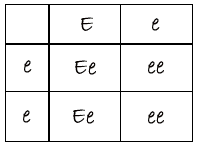
Now we do another, larger Punnet square combining the two. Instead of putting one parent at the top and one at the side, we put the
results from the E locus and the B locus in those boxes. There are four results from each of those, so the Punnet square needs to be 4 x 4 (giving 16 results):
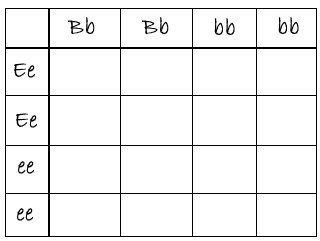
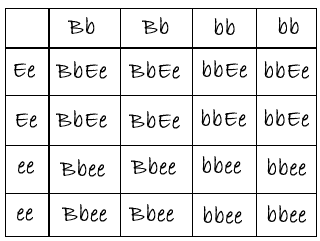
Our sixteen puppies will therefore be as follows:








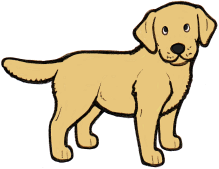

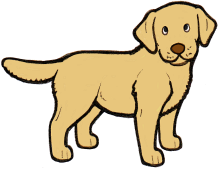





That means each puppy has: 4/16 chance of being black, 4/16 chance of being liver, 4/16 chance of being black-pigmented yellow, and 4/16 chance of being liver-pigmented yellow. We can reduce these fractions to make them smaller and easier to work with. 4/16 reduced by 2 is 2/8, reduced by 2 again is 1/4. So each puppy has a 1 in 4 (i.e. 25%) chance of being each colour. We can represent the litter more simply like this:





One further complication of Labrador genetics is the variation in the shade of yellow. This is caused by a newly mapped locus known as I (for "intensity"). This locus determines how intense the phaeomelanin (red) pigment is, and so determines whether a Labrador is white, yellow, gold or red.
Although two basic alleles have been located on this locus so far, they don't seem to account for all of the variation in phaeomelanin intensity and aren't applicable to all breeds. So as the genetic basis for this variation in intensity is not really known, we can't add it to our calculations. However, it's important to remember that the variation is there and that intensity does pass down from parents to puppies, even if we don't yet know exactly how.
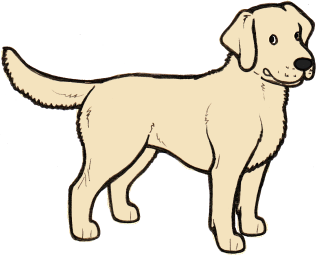
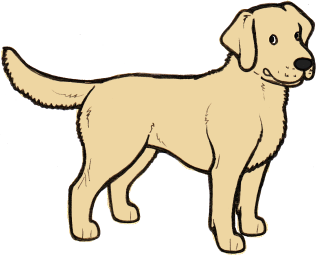

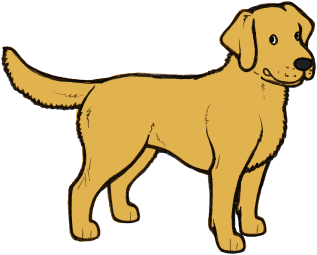
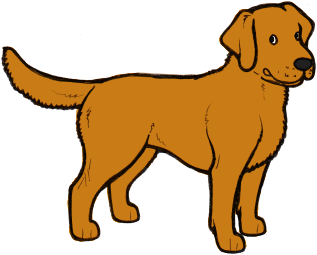
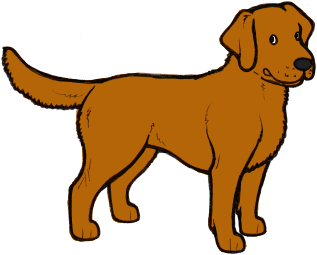

Phew. That was all a bit of a headache. But now you should have a much better and more accurate understanding of Labrador genetics, and this knowledge can easily be transferred to other breeds. Any amount of loci can be considered while calculating breeding results, just remember that a Punnet square will only take two variables, so you'll have to split the locii up to work them out. You can find more information about working with more than two loci at a time on the Great Dane page.


** Please note that I am not a research scientist, and the information on this page comes from my own knowledge and observation of dogs, observational and testing data provided via e-mail by site visitors, any research papers linked on the page, and the information provided by Dr Sheila M. Schmutz on her excellent website http://homepage.usask.ca/~schmutz/dogcolors.html
For further genetics resources, see the Links page